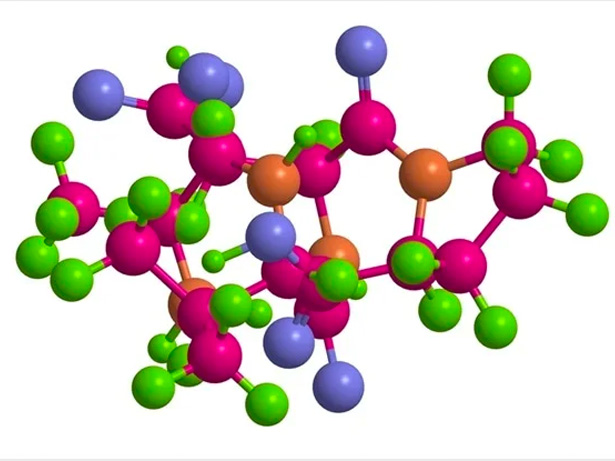Dating back to the discovery of insulin in the 1920s, peptide drugs have a long history.
Although these drugs were originally limited to naturally occurring peptides, recent advancements in our ability to synthetically generate and modify these molecules have driven this class of drug modality to new heights.
Achim Link, Field Development Services Manager at Solvias, reports.
The blockbuster success of GLP-1 agonists, for example, demonstrates the remarkable power of synthetic peptides, thereby renewing interest in harnessing the potential of peptides.

However, manufacturing custom peptides is a complex process that requires rigorous quality control to guide development and ensure patient safety.
In this article, we’ll discuss how a centralised quality control process can help to guide developers through the intricacies of peptide manufacturing and consistently deliver safe and high-quality products to patients.
The complexity of modern peptide production
When the medicinal value of peptides was first being explored, scientists were limited to peptides from natural sources. This meant that peptides were only available in their native/unmodified form and were often purified and extracted from animal sources with significant variability between batches.1
These crude production techniques were subsequently improved in the late 1970s when DNA cloning technology enabled peptides to be reliably produced at scale in bacteria.2
However, although these bacteria-produced peptides generally showed great tolerability and specificity, they had several drawbacks.
Peptides in their native form often have a short half-life, poor permeability and must be injected subcutaneously because they cannot be administered orally.
Today, many of these shortcomings have been overcome by modifying existing peptides or generating new ones from scratch.
One of the predominant methods used to create synthetic peptides is solid-phase peptide synthesis (SPPS); peptides are built by chaining amino acids together in a stepwise fashion on a solid support, such as a resin.
These custom-made peptides can be designed to overcome the shortcomings of naturally derived peptides, offering longer half-lives and better permeability.

But synthesising peptides is a resource-intensive process. Creating synthetic peptides at scale requires large volumes of high-quality reagents and involves many complex steps.
Furthermore, peptides generated in this manner must undergo purification processes that ultimately result in a lower final product yield. To meet demand, synthetic peptides must therefore be generated in large batches at multiple manufacturing sites.
Given the complexity of the production process and the various locations, peptide synthesis demands a robust quality assurance process.
Analytical testing ensures consistency between sites and batches, acting as a central pillar of modern peptide synthesis that supports both clinical efficacy and patient safety.
A comprehensive approach to peptide quality control
Given the complexities of peptide analytics, quality control should be approached from multiple angles. From an analytical perspective, several critical quality attributes (CQAs) must be considered for peptides, which require various types of instrumentation to evaluate.
First, quality control should verify that the amino acid sequence and molecular weight of the compound are accurate.
However, unlike other modalities, peptides are susceptible to misfolding, chemical degradation and other errors that could significantly affect safety and efficacy. Consequently, a more detailed assessment of purity is also essential.
One of the central analytical techniques for in-depth analysis of peptides involves combining chromatography techniques (such as liquid chromatography or size-exclusion chromatography) with mass spectrometry.
With this method, peptides can be filtered by size and then precisely measured by mass spectrometry. These analyses should be paired with techniques such as analytical ultracentrifugation (SV-AUC), which can be used to examine peptide weight and bonding.
When used in combination, these analytical techniques provide the necessary depth of analysis needed for peptide quality control.
But quality control doesn’t stop there. Many peptides are suspended in a liquid formulation that protects them from degradation by environmental factors before reaching a patient.

During formulation, peptides may become prone to aggregation, hydrolysis (a type of degradation) or simply fail to remain appropriately soluble in solution.
Thus, quality control must also include an assessment of the final peptide formulation. In instances when the formulation does not adequately stabilise the peptide, careful analysis done during quality control can inform subsequent adjustments to the liquid.
Because peptide quality control is so complex, drug developers should consider centralising their quality control processes with a contract research organisation (CRO).
Partnering with a CRO not only provides access to the specialised equipment and technology needed for peptide analysis, but it also connects companies to experts who are capable of guiding any necessary corrections.
The right CRO can be a valuable resource when selecting the right peptides and optimising drug formulation, helping drug developers to create a comprehensive peptide profile that they can take to market with confidence.
Conclusion
Peptide drugs have come a long way since their discovery. The ability to synthetically customise peptides has dramatically expanded the field and led to some remarkable medicines.
Most notable, perhaps, are the engineered GLP-1 agonists that have far superior pharmacokinetic properties compared with endogenous GLP-1. Yet, these therapies bring manufacturing challenges that must be carefully managed.
A robust and centralised quality control process is the foundation upon which reliable and efficacious peptides can be produced … and there are few organisations better-equipped to provide that quality control than a top-tier CRO.

